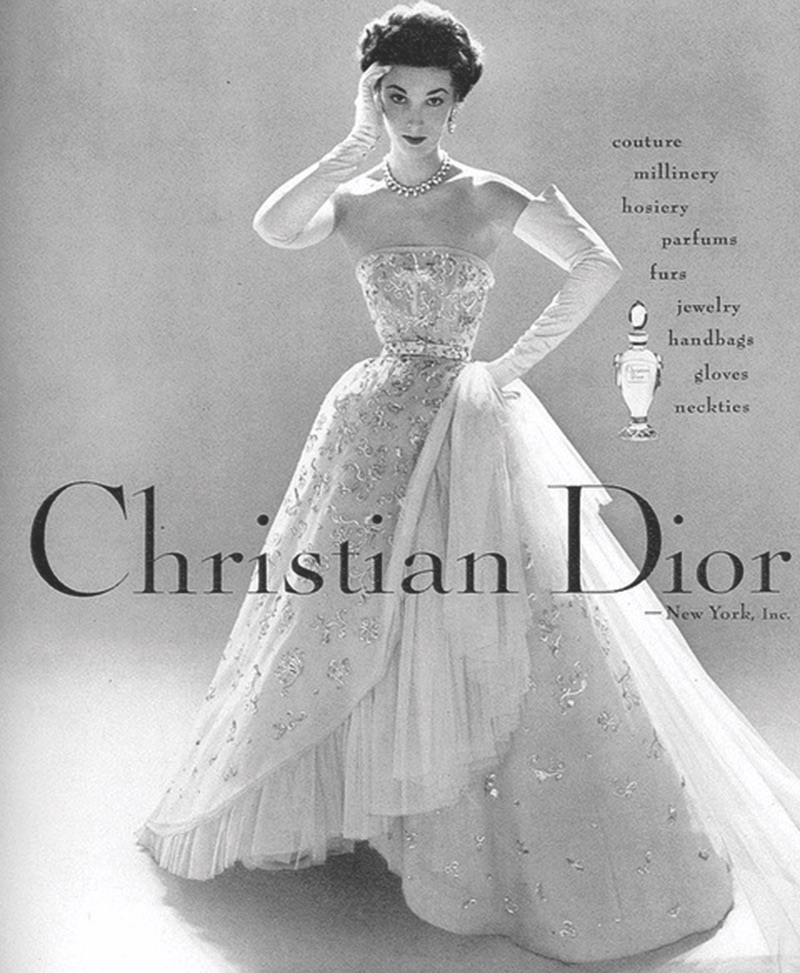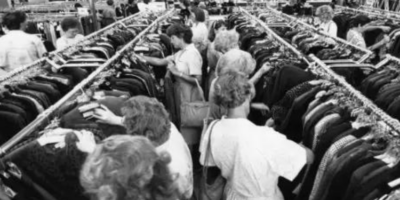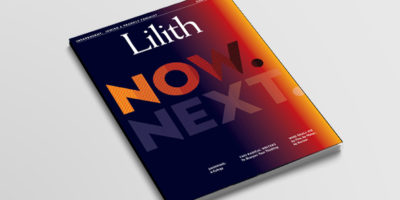
Politics Shapes Party Dresses
In all the years I’d been wearing, collecting and swooning over vintage fashion, I remained a pure formalist. My appreciation was based on the nuances of cut and color, shape and design. It wasn’t until I began a more methodical kind of research into some of my favorite silhouettes that I began to see how they were part of a broader cultural context. The subject in question was Dior’s “New Look” in women’s clothing, introduced in the spring of 1947, featuring rounded shoulders, a cinched waist and a very full skirt. I was writing a novel, Not Our Kind, set in that year, and my two protagonists—one Jewish, one most emphatically not—were both aware of Dior’s recent game-changer, so I was prompted to find out more about it.
To understand fully the implications of this new and quintessentially “feminine” silhouette, I had to look back just a few years, to World War II, when rationing and privation went hand in hand with patriotism and national pride. The urgent need to direct fabric (and so many other resources) to the war effort had a direct impact on clothing styles. Women’s jackets were fitted and short, and skirts simple and narrow, and both were made with the minimum of material and labor.
So two years later, when the war is over, Dior’s New Look bursts on the fashion scene not like a bombshell—there had been enough of those—but like a meteor shower, dazzling and gorgeous. You can see this even in the jacket—inches longer, trimmed in fur—but it’s the skirt that really drives the point home. That beautiful, long, twirling skirt required 18 yards of fabric, and then another 18 to line it. And then there was its length—a typical skirt of the war years measured 15 inches from the shoe; Dior lengthened his skirt so that measurement was only 9 inches.
Some might see this as gross indulgence, a wanton squandering of resources and time. But this skirt was a powerful symbol of the hopes and dreams of a nation—of several nations—meant to place the horror of the war in the rearview mirror. The elegant, swirling skirt proclaimed the bad times and the deprivation were gone, all past. Now there would be beauty and bounty—vive la différence. And that this dress by Dior photographed by Richard Avedon was shot on the Place de la Concorde may be a coincidence, but it couldn’t be a more perfect expression of the designer’s intent. Peace, harmony, and the embrace of a glorious future were the subtext of a skirt whose graceful, twirling folds evoked a flower unfurling its petals.
Dior’s iconic suit is a good example of how what we wear is an emblem of the times in which we are wearing it, so it’s intriguing to speculate on what kind of effect the present pandemic will have on fashion. In quarantine, women have been jettisoning bras and Spanx in favor of leggings, and loose, unstructured or oversized pieces in soft, skin-caressing fabrics. On fashion sites like Vogue and Harper’s Bazaar there’s been a lot of attention lavished on pajamas—flannel, poplin, silk-trimmed-with-maribou feathers—along with robes, shawls and slippers. The message is clear: we’re staying home in comfort as well as style.
And yet, when the virus is conquered, or at least contained by the triumvirate of testing, treatment and vaccines, women will once more venture out of their homes. What will we be wearing? It might be reasonable to assume that the home-grown comfort will remain with us in spirit and that we’ll be seen trotting around town in caftans or yoga pants and Sketchers.
But I can also envision another scenario, one not unlike Dior’s extravagant response to the austerity of the war years. Our collective post-pandemic aesthetic may well lean toward exuberant color, extravagant pattern and excess of many kinds. Masks are sure to be with us for a time, and we’re already seeing them cast as fashion accessories, rendered in such prints as leopard and toile de Jouy. Gloves—washable, flexible, colorful— may soon follow.
While it’s only a supposition, and not a certainty, I’m casting my vote for the latter trend. Just before Covid-19 exploded, I bought a lime green raw silk coat, circa 1967. Embellished with clear, Lucite buttons and lined with—get ready—hot pink and white polka satin, it’s the perfect garment in which to celebrate victory over the pandemic. Mr. Dior would have agreed.



